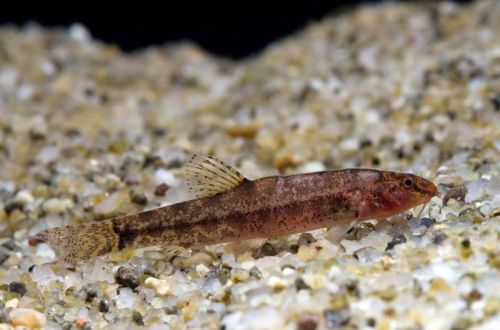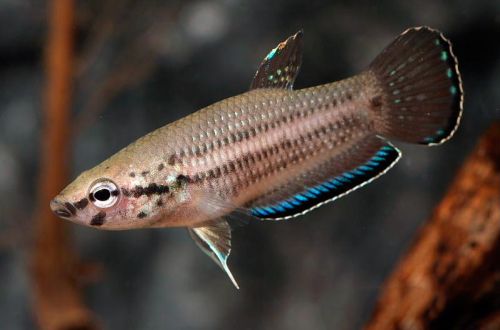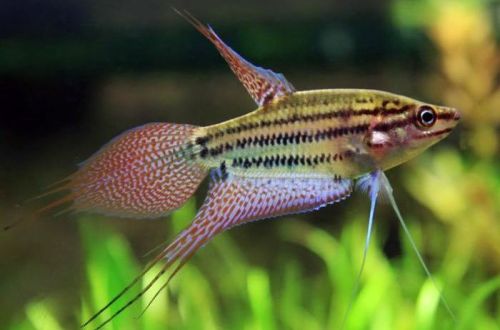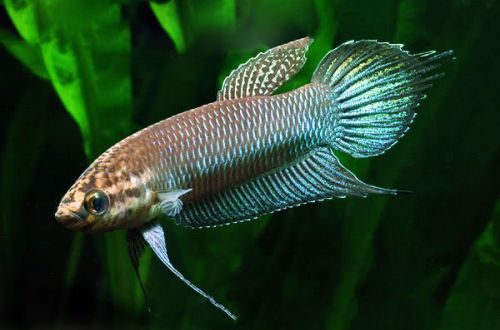
slender cockerel
The slender cockerel, scientific name Betta bellica, belongs to the Osphronemidae family. One of the oldest fighting fish known to Europeans, it was introduced as early as 1905, but did not become as popular as its relative, the Siamese cockerel, perhaps due to a lower degree of aggression during fights between males. A rather large and hardy fish, which in nature is able to survive in damp forest litter left over from a dried-up reservoir. It is not at all troublesome to keep in a home aquarium if you follow the requirements for the composition of the water and the diet.
Groups / classification of fighting fish (Petushkov)

Contents
Habitat
Wild populations are found on the territory of modern Malaysia, Indonesia and the island of Sumatra (Southeast Asia). They live in forest peat bogs and their tributaries with dense vegetation. The dense crowns of trees do not let in light, so the sun’s rays practically do not reach the surface of the water. Water conditions have very acidic pH values due to the abundance of plant organic matter (grass, tree leaves, branches, roots, etc.).
At certain times of the year, forest water bodies can dry up almost completely and the fish live in a semi-moist substrate for several weeks in anticipation of the rainy season.
Brief information:
- The volume of the aquarium – from 80 liters.
- Temperature – 25-30°C
- Value pH — 4.0–7.0
- Water hardness – soft (1-8 dGH)
- Substrate type – any
- Lighting – subdued
- Brackish water – no
- Water movement – little or no
- The size of the fish is up to 9 cm.
- Meals – preferably meat
- Temperament – conditionally peaceful, timid
- Keeping alone or in pairs male / female
Description
Adult fish reach a length of up to 9 cm. The color is brown with numerous greenish-blue specks. Sexual dimorphism is weakly expressed, males differ from females in color intensity and more extended fins.
How to determine the age of Cockerels (Betta Fighting Fish)
Food
In nature, it feeds near the surface on small insects and their larvae. In the process of hunting, it often jumps out of the water to catch low-flying prey or grab it from overhanging leaves or branches.
In a home aquarium, the diet should consist mainly of live or frozen foods (bloodworm, brine shrimp, mosquito larvae, etc.). An excellent alternative can be specialized food for Betta fish (fighting fish), which include the Slender cockerel, which contain the necessary trace elements. Give preference to well-known manufacturers, in order to avoid purchasing low-quality food.
Maintenance and care, arrangement of the aquarium
The size of the tank for one pair of fish starts from 80 liters. The design uses a dark soft substrate, shelters in the form of snags (intertwined roots, tree branches) and dense thickets of shade-loving plants.
To create conditions characteristic of the natural habitat, the bottom is covered with dried fallen leaves. For these purposes, oak leaves are perfect, which must first be washed and soaked in a container until they begin to sink, otherwise they will float on the surface of the aquarium. Leaves serve not only as an element of decoration, but also have a positive effect on the hydrochemical composition of water. In the process of their decomposition, the water turns into a slightly brown color and is saturated with tannins. Leaves are renewed once every one or two weeks.
Water conditions should have acidic pH values with low carbonate hardness. It is recommended to use a filter with a peat-based filter material, or artificially acidify the water with phosphoric acid (strictly follow the proportions). The filtration system is adjusted to keep internal flow to a minimum. The aquarium is equipped with a lid, thanks to which a warm air layer will form above the surface, which is important for the health of labyrinth fish. Maintenance comes down to weekly water changes (10-15% of the volume) and regular cleaning of the substrate from organic waste.
Behavior and Compatibility
Refers to fighting fish. Intraspecific relationships are built on the dominance of the male individual in a certain territory. Males engage in fights with each other, which in the confined space of the aquarium can lead to injury. Compared to other fighting fish, the Slender Cockerel is not as belligerent, but still the males should be kept separately. The best option is one male and one or more females. In relation to other species, it is very peaceful and can be combined with calm fish of a similar size.
Breeding / breeding
As the mating season begins, males build a bubble nest under broad leaves, under dense floating vegetation, or in a cave-like shelter on the bottom used in decoration. During the construction process, the male is very harsh towards the female and does not let her near the nest until it is ready.
Shortly before spawning, the color of the female will fade, and dark horizontal stripes will appear on the sides. Spawning itself is accompanied by a kind of “embrace”, when the fish, the word, wrap around each other. At the point of climax, milt and a few eggs are released and then placed in the nest. This is repeated several times until all the eggs are released. The female then swims away, leaving the male to protect and care for future offspring.
The fry appear in 24–48 hours and remain in the nest for another 3–4 days, all this time the male carefully picks up those who accidentally fell out / swam out of it. After the fry begin to swim freely, the male will lose interest in them. Adult fish do not suffer from cannibalism and usually do not eat their offspring. However, this does not apply to other aquarium neighbors and it is advisable to transfer the juveniles to a separate tank with identical water conditions. Feed with specialized food for aquarium fish fry.
An unusual behavior has been noted in this species if the fry grow with their parents. When juveniles reach sexual maturity, adult fish begin to lose color and become lethargic, slow, as if they have quickly aged. If the fry grow in a separate tank, then adult fish retain their activity and brightness of colors.
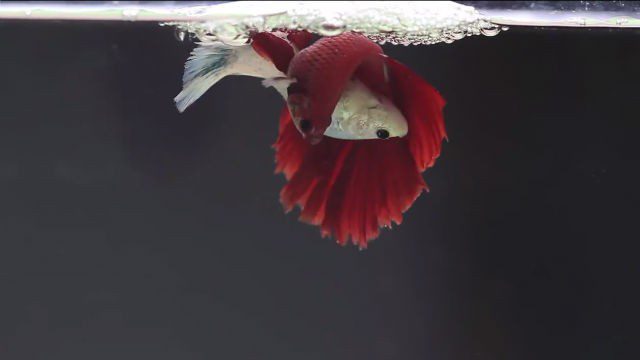
Fish diseases
The main cause of most diseases is unsuitable living conditions and poor-quality food. If the first symptoms are detected, you should check the water parameters and the presence of high concentrations of hazardous substances (ammonia, nitrites, nitrates, etc.), if necessary, bring the indicators back to normal and only then proceed with treatment. Read more about symptoms and treatments in the Aquarium Fish Diseases section.
Common diseases of fighting fish (Petushkov)



